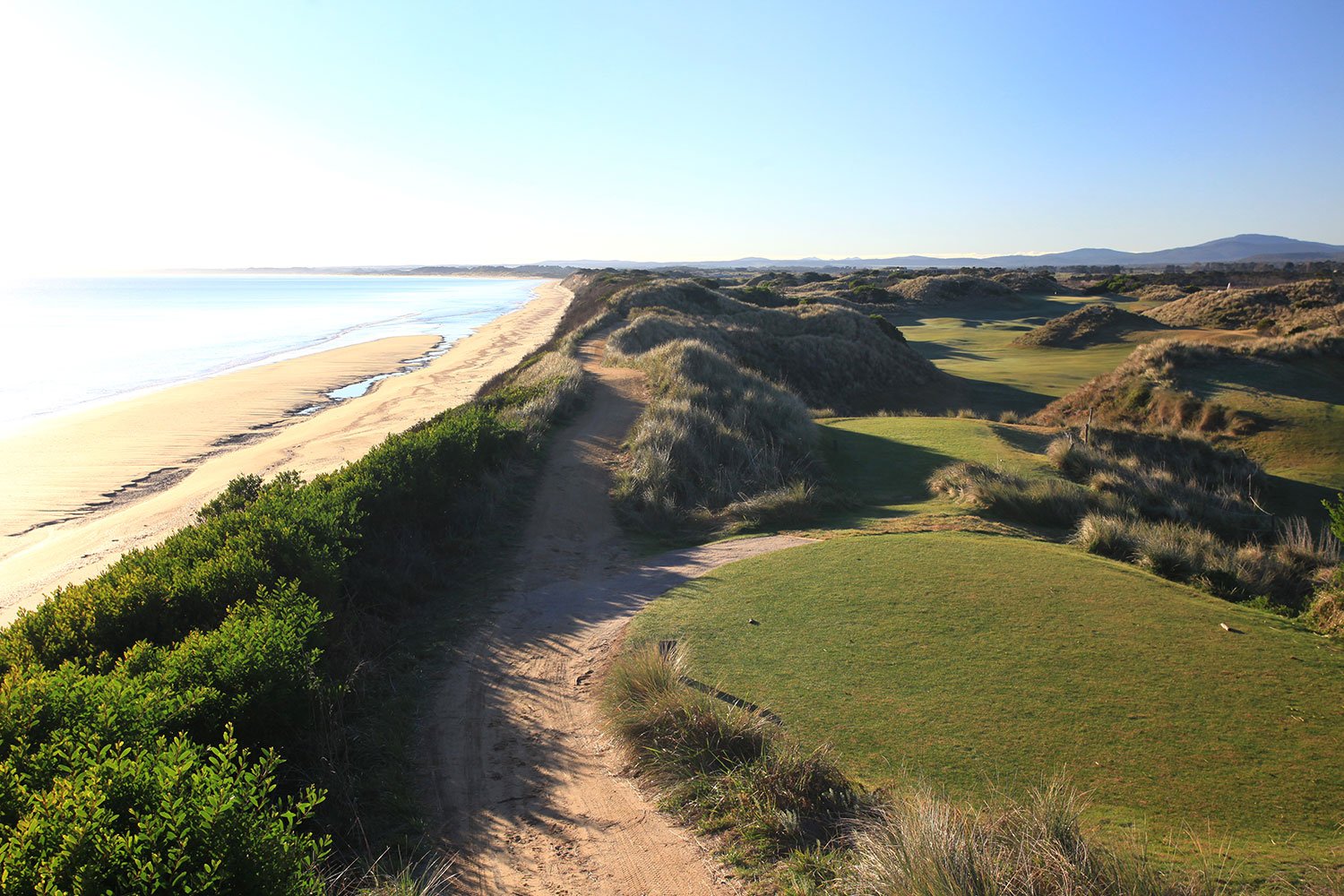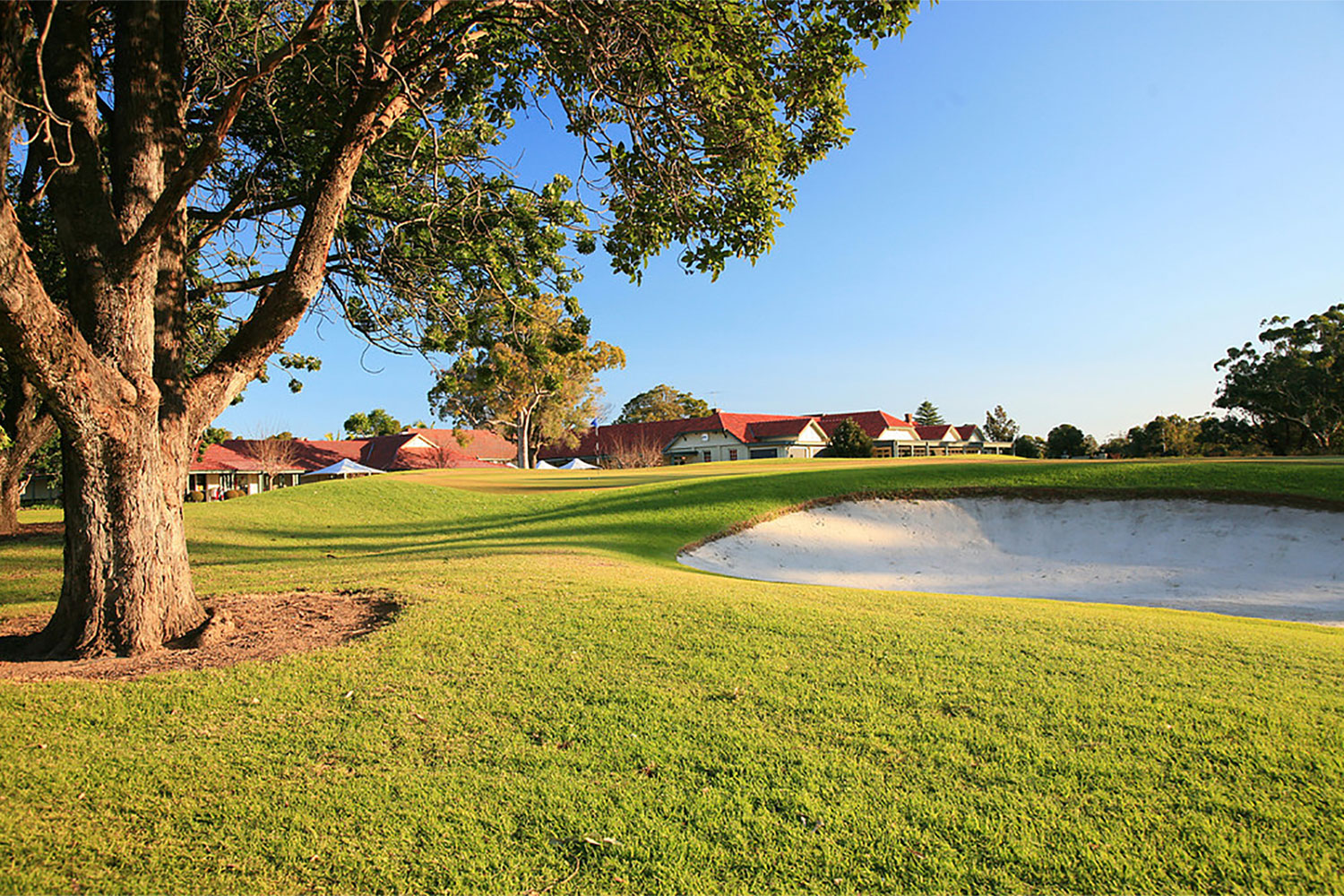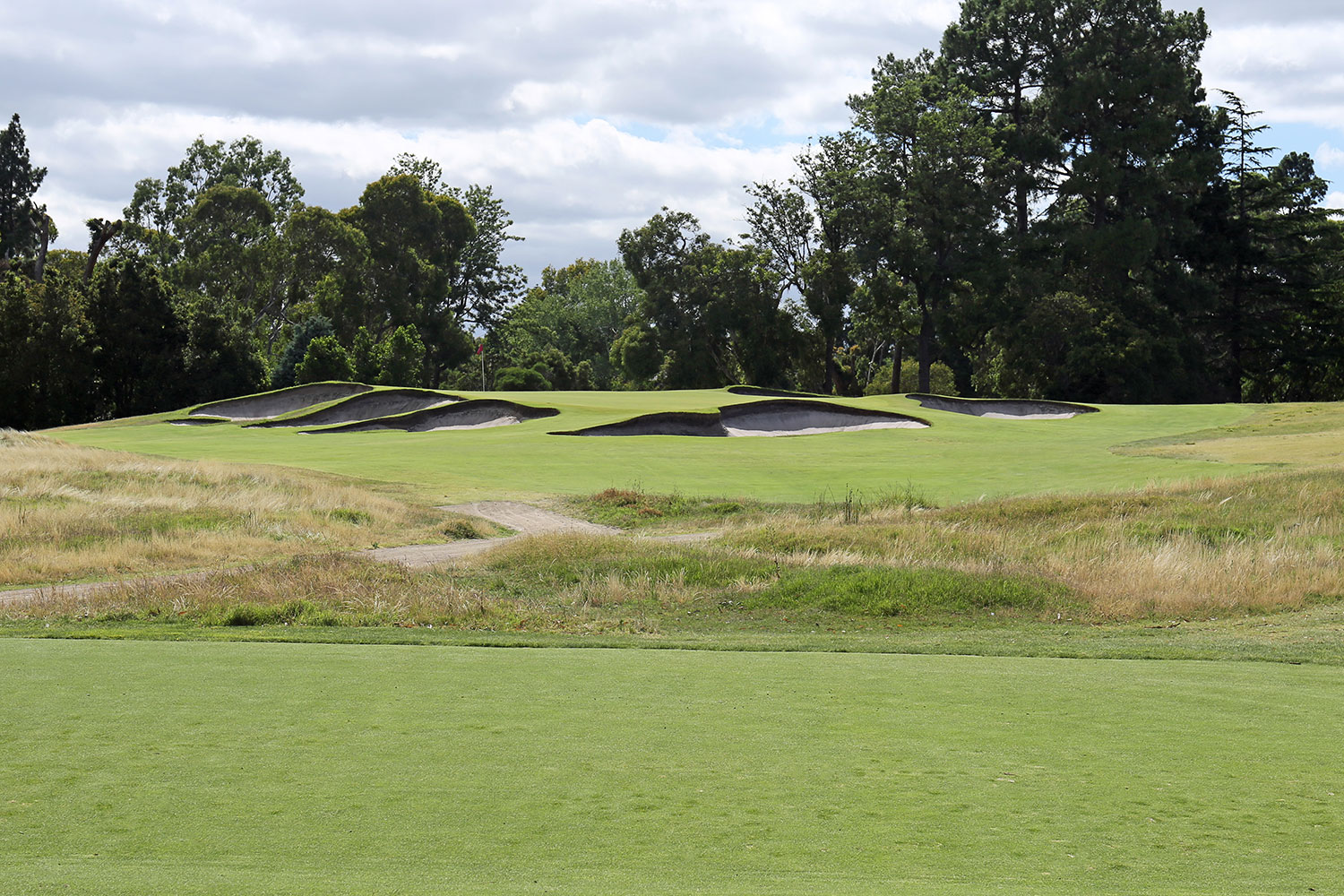Tom Doak | 57 | Michigan, USA | Minimalist Course Architect
I get how Concord Golf Club doesn’t strike people as a typical ‘Tom Doak site’. And the main reason we got involved was because they really wanted us involved. I tried to turn down the job once or twice but the club just kept calling. In general, redesign is not my thing so much. When you look at a new site from scratch, your mind can go in a million directions. But when you’re working with an existing golf course, there’d better be some good ‘bones’ because it’s almost impossible to say, “We’re totally changing it.” Everything that’s happened to this golf course in the past 80 years has reinforced a basic plan that’s here and it’s really hard to get outside that.
▶ ▶ ▶
The thing about redesign is, at the end of the day, all golf-course architecture is a matter of opinion. We started with 18 holes and when we’re done there’s going to be 18 holes. The only reason it’s better is because people like it better, which you can’t guarantee. They have to have a lot of faith in us to do it. I wasn’t ready to agree to do the job at Concord until they sounded like they had the faith in us to do it and would let us do whatever we felt like we wanted to do in order to make it better.

I’ve been fortunate to work on a lot of great sites and I know that the rankings of my courses is based a lot on what I had to start with. At the same time, it’s not like, “It doesn’t have the potential to be a Top 100 course so I’m going to turn that down.” I know how special it is to get one of those jobs. We’ve got a few of them but you don’t make a career out of just doing those. I’m not that concerned with how people are going to rank this at the end; we’re just trying to make good golf holes better and trying to be creative in an interesting situation.
▶ ▶ ▶
We’re all lined up to work on the Ocean course at The National in June, July, August. It’s easier to work on a site like that in the winter when it’s wet and the sand will stay in place, to a degree. Most of what we’re doing is the greens and the surrounds of the greens – that’s bentgrass so you want to plant it coming out of the cool weather and into spring.
▶ ▶ ▶
Any time I’ve been to Australia, every time I’ve been anywhere near Melbourne, I’d just go out and walk the golf courses at Royal Melbourne because I love them. We did a lot of work to the East course right after we signed up as design consultants. They had changed some things because of boundary issues and the club wasn’t happy with how all of them were playing. They felt their previous consultant was too concerned with boundaries and not enough with golf – and there are too many good golfers at that club to leave that impression with.

When I came here the first time in 1988, the two courses that impressed me the most that have fallen off the radar since were Commonwealth and Yarra Yarra. Both of them have had to make changes. Yarra Yarra has six or eight of the best holes in Melbourne. There are some other things wrong with it in between, but it’s got a lot of really good holes. It’s been a shame to see the balance has dropped out of it a bit, because it’s a great golf course. So that’s the appeal of working there.
▶ ▶ ▶
I’m well aware I’ve taken some work away from Australian-based designers. This is such an odd business. I’ve got some good friends that are architects down here and they would all love to be consulting on Royal Melbourne, Yarra Yarra and some of the clubs we’re working with. At the same time, Mike Clayton and Geoff Ogilvy are trying to win jobs in the States, too. So I don’t think there’s any real animosity there. The odd thing is, it’s always been that way. Alister MacKenzie had the advantage of also being the ‘cool guy from outside’ and there was cachet to that. That’s why Royal Melbourne hired him and that’s why everybody else said, “Oh, if he’s the best, let’s get him too.” I’m kind of going through the same thing now. Once we agreed to consult at Royal Melbourne for a few years and be here more regularly, some of those very same clubs said, “Well, seeing as you’re here, would you be interested in talking to us, too?” I’ve limited how many I’ve said ‘yes’ to because it’s a big commitment to come back and forth from the States. MacKenzie only came once! For 10 weeks, he waved his hands around a lot and left a couple of great guys here to do the construction and never saw any of it again. There are days when I envy that.
▶ ▶ ▶
In some ways, I think Australia is light years ahead of the rest of the world. Your courses are dealing with water issues that Americans haven’t got a handle on at all yet. You’re probably 15 or 20 years ahead of us in that front. I go to LA and it’s a droughty place just like Sydney and Melbourne are droughty places and they’ve not done much to address it yet. They’re starting to make smaller areas of turf but they’re not using the most water-efficient turf or doing anything to harvest their own water supply. That’s the most amazing thing to me, seeing what Royal Adelaide and Royal Melbourne have done by taking the water off the streets around the golf course, cleaning it up and using it.

Is there another Australian course I’d love to redesign? Usually I avoid answering this question if somebody else is the consultant there. But there might be one or two, yes.
▶ ▶ ▶
I have been to King Island; about a year-and-a-half ago. There’s some beautiful land there for golf and from that standpoint it would be appealing to design a course there. From a realistic standpoint? I don’t know if the business model works there as well as, say, Barnbougle. It’s more expensive to get to King Island. Australian golfers are much more price-sensitive than US golfers, too. Barnbougle, for how good it is, they charge somewhere between half and a third of what they’d be charging in America. But they firmly believe if they tried to charge a lot more then nobody would come.
▶ ▶ ▶
The best feedback on a course you’ve designed is always walking around yourself and watching other people’s shots and what happens to them. Yes, that bounces the right way and, yes, you can play a shot up to the side and have it bounce back onto the green. Some courses we get a lot of chances to do that and some we don’t. The downside of working 8,000 miles from home is you don’t get to do that very much.
▶ ▶ ▶
About two or three years ago, I wasn’t playing as much golf. And I’ve seen it in the work of some other architects – as they get older and stop playing, they get disconnected. If all you do is watch golf on TV, you think everybody is that good, which they’re not, and your work suffers for it and you forget who you’re building golf courses for. I played close to 50 rounds of golf last year, which is a lot for someone working in the golf business.

If the people I’m playing with will let me, I do try to remove myself from the architecture of the course we’re playing. Frankly, the hardest thing about going back to courses I’ve designed is that the client, the superintendent, they all want my ear about, “What do you think about this?” and, “What do you think about that over there?” It’s really hard to just be able to go and play your own golf course and relax and enjoy it.
▶ ▶ ▶
I love going out and playing my golf courses – it’s the most fun part of the job and I wish I had more chances to do it. People ask me all the time, “What’s your favourite golf course that you’ve done?” and it’s hard to compare. Barnbougle Dunes, I’ve played maybe 10 times. And still, every time I go I get those questions, so half of my opinion of it is still, This is the way I designed it, and not, I enjoyed that shot that I just hit, which are completely different things.
▶ ▶ ▶
In my book, Tom Doak’s Little Red Book of Golf Course Architecture, I wrote: “Every player must become an architect” in order to “figure out how best to attack with the shots they possess”. Not enough everyday golfers realise this. I learned through caddieing for a little bit at St Andrews and playing with people ever since that most people are poor or unrealistic managers of their own golf game. And they think way more negatively than they should. There’s also the part about being realistic about what you can do and what the odds are of pulling off the shot in front of you. It’s OK to try to make the high-risk shots if you don’t care what score you shoot, and personally I don’t care about what I’m going to shoot very often – I’m just out having fun. If you’re playing competitively at your club, if what you shoot is important to you, be a little more realistic about your ability. Basically, if you don’t have a 6-iron or less in your hand, don’t be thinking about hitting the green; think about where’s a good place up around the green to hit your next shot from. That approach would help people a tonne.

The most prominent aspect of course architecture that the average golfer doesn’t appreciate is how three-dimensional it is. I think there are some architects that don’t understand how three-dimensional it is sometimes. It’s not just about how long and narrow the green is, how long the hole is or how far it is to that fairway bunker. What happens when the ball lands – because it’s not a flat surface – you need to design everything around that and around the wind and know that some places the ball’s going to roll out a lot more and some places it’s going to stop right away. That’s a big part of what you’re doing. The saying, ‘Being able to think in three dimensions,’ has everything to do with building greens and what the shots are around the greens. Just like ideally on one side of the fairway it should be harder to hit the green from than the other side – so the person who’s thinking would go to the side that makes it easier for themselves – it’s the same around the greens. So, If I’m not going to hit it straight at the flag, which side do I have more chance of getting up-and-down in two? Most people don’t think about that at all, they just fire away.
Hits and Misses
Some architectural characteristics (sins?) are more egregious than others. So, what does Tom Doak think of:
Easy first holes?
“Overrated. My home course in Michigan starts with a 450-yard par 4 with the most severe green on the golf course. As a member, you just think of it as a par 4½.”
Island greens?
“I hate them. If there were a natural island, then that would be one thing. But digging a big lake and building an island in it is very, very two-dimensional.”
Bunkers directly beside water hazards?
“I’m not necessarily opposed to double hazards completely. Some people don’t understand that it’s not all about the play – there are other considerations. You might need an environmental buffer, for instance.”
10th-tee starts?
“I don’t like to be bound by the idea that the course has to return after nine holes because that takes away maybe 80 percent of the options that you have for routing the golf course. I understand the need to have another place to start play, but I don’t want that to be a priority.”
Cartpaths?
“I wish we didn’t have to have them anywhere; they really spoil the landscape. Carts, per se, don’t bother me. I like to walk and play golf but if somebody needs a cart then I don’t have
a problem with that.”
Cart-only courses?
“I hate them. To this day, there’s not one single golf course in those Top 100 lists that is a cart-only course. The walkability of a golf course is more and more important to me the more I build them.”
True or false: you’re not a true golfer unless you’ve been to St Andrews.
“I wouldn’t go that far. I would say, ‘You can’t totally appreciate golf if you haven’t been to St Andrews.’”




